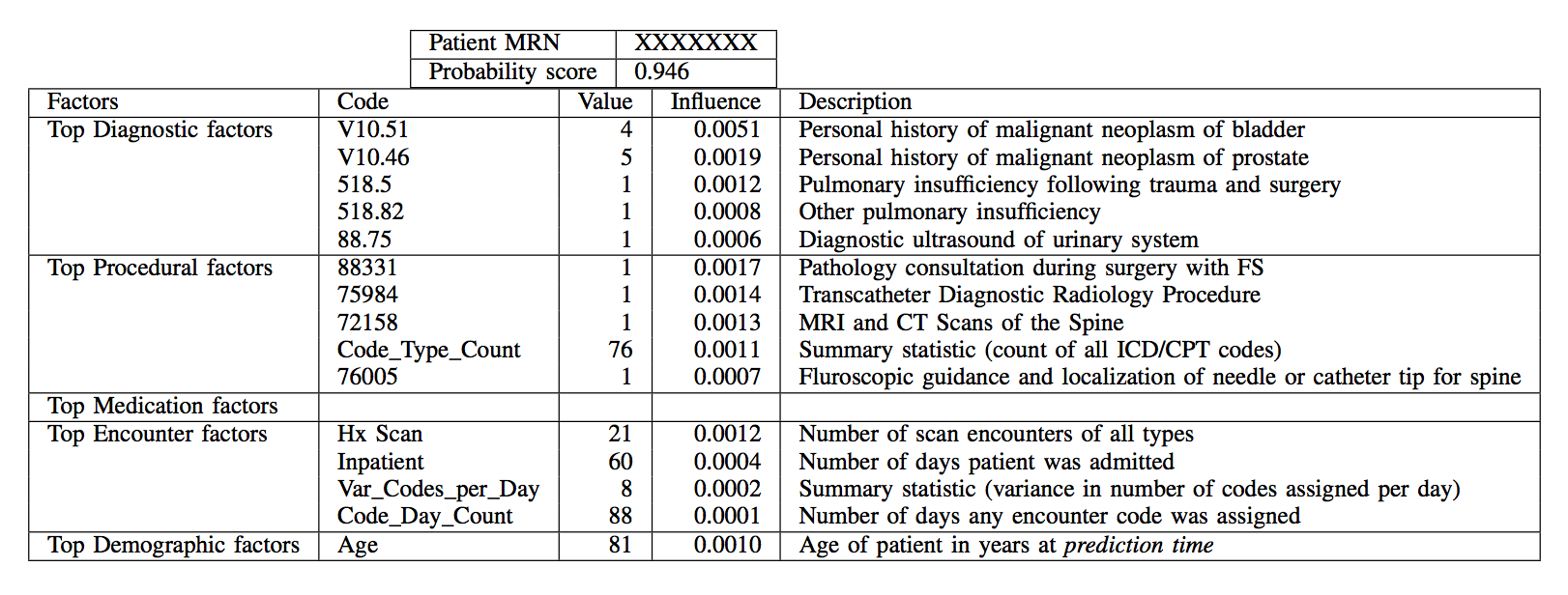Our model is an 18-layer Deep Neural Network that inputs the EHR data of a patient, and outputs the probability of death in the next 3-12 months.
We train the model on the historic data from the Stanford Hospital EHR data base, which contains data of over 2 million patients. The model is trained to predict probability of patient mortality in the next 3-12months. Training uses patient's EHR data from the past 12 months, specifically the diagnostic codes, procedure codes, medication codes, and encounter details. All this data is converted into a feature vector for 13,654 dimensions. The trained model achieves an AUROC score of 0.93 and an Average Precision score of 0.69 on cross validation.


